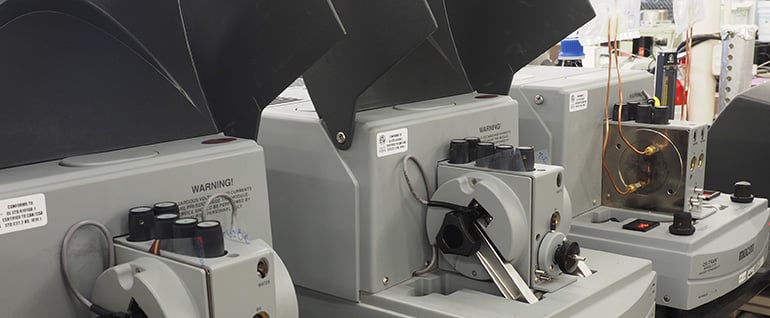Evaluating Barrier Properties in Key Material Decisions

12 Jul 2016
Instrumented Vs. Non-Instrumented Measurements for Water Vapor Transmission Rate Testing
Barrier properties often drive decisions on the selection of flexible polymer barrier materials for applications. One of the best ways to make key material decisions is to take the time to run industry accepted laboratory test approaches whenever possible. Choosing a technique can be difficult as it requires insight into the range of test procedures commonly used in the industry. When it comes to determining water vapor transmission rate, (WVTR) there are two common test techniques to consider:
- Instrumented technique: The instrumented method uses permeation equipment. Under a selected temperature and humidity, a barrier film is sealed between a wet chamber and dry chamber. Sensors measure moisture transmitted through the material.
- Non-instrumented technique: The non-instrumented method uses a manual cup approach. A cup is filled with distilled water or desiccant leaving a small gap (0.75" to 0.25") of air space between the specimen and the water. The cup is then sealed to prevent vapor loss except through the test sample. An initial weight is taken of the apparatus and then periodically weighed over time until results become linear, typically six statistically spaced points.
The three major factors that influence water permeation are temperature, humidity and thickness. With that in mind, there are clear benefits to each method. In order to determine which method is the best, three factors should be considered: convenience, time and historical significance.
- Convenience: When considering the convenience each test offers, look at sample size and the flexibility for sample configurations. Both of these methods have limited flexibility when it comes to optimum sample configuration. The non-instrumented technique only allows for sheet material. Keep in mind that if the expectant permeation values are less than four perms, sealing may become an issue. Thickness also plays a key role in this test, and it is optimum to test at application thickness. Some equipment used in the instrumented technique is limited to about 2mm in thickness for standard configurations. Sophisticated instrumentation widens the sample configurations tested to beyond sheet material to include packages and bottles. Finally, consider that the equipment used in the instrumented technique provides a "closed system". Closed systems closely control variables such as temperature and humidity. When it comes to convenience, there is no clear winner between the instrumented and non-instrumented techniques.
- Time: Testing time can differ greatly between the two methods. Instrumented methods runs typically take up to 100 hours. Non-instrumented methods can continue for 2 plus weeks, and equilibrium can be hotly debated. Because good instrumentation is fast, this method is the winner!
- Historical Significance: The non-instrumented method dates back to the 1950s for the standard method, Standard Test Methods for Water Vapor Transmission of Materials ASTM E96. This method has historical oomph! Leading permeation equipment used in instrumented testing, as recognized today, started around 50 years ago. Common test methods such Standard Test Method for Water Vapor Transmission Rate Through Plastic Film and Sheeting Using a Modulated Infrared Sensor ASTM F1249 were established in the late 1980s. The non-instrumented takes the prize!
Instrumented and non-instrumented approaches to measuring water vapor transmission rate of films each have their merits. A greater awareness and understanding of the methods, coupled with the characteristics of your product and your priorities for the test, are the best way to determine appropriate approaches for each application.
*Please note that this test description is intentionally generic in nature and aimed at providing a descriptive summary to enhance test understanding. Standards can be obtained from appropriate standard authorities.
